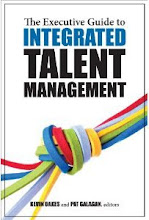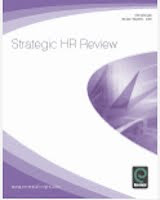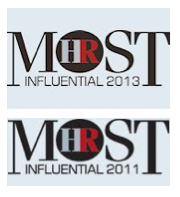I'm hoping doing this will emphasise and reinforce some of the points I've been making today, because my understanding is that the talent challenges there are actually fairly similar to those experienced elsewhere, just even more so.
In fact, the Talent in China blog has just quoted some research by Dr Jos Gamble of Royal Holloway, University of London:
"He essentially says that China is much like any other market, and that adjustments should really only be made for institutional features, like the labor market. Other than that it is business as usual. You operate as you do overseas, except when there is a specific reason why you can’t, like a law or a deeply ingrained practice."
These 'institutional features' are of course fairly significant for HR though.
This is why, at the CIPD's conference last year, Geraldine Hayley at Standard Chartered explained that "China is different from everywhere else" and therefore that they "do quite different things there".
She explained that the bank are growing their 3000 employee workforce by 50% this year. No mean feat given that they have 30% turnover with over 50% of employees having been with the bank for less than a year and 20% departing within their first year of employment for more money and better prospects.
And the challenge isn't helped by the fact that there are not experienced bankers in China. So they are having to create a new 'talent infrastructure': finding people who have never thought about doing banking, selecting them for their talents, training them up and hoping that they will hit the ground running.
They do a lot more development in China than anywhere else - partly to engage them and partly to provide the required capabilities.
And they're engaging people from all around the world to go to China - it doesn't matter about language skills - they just need "bodies on the ground".
China Business also did a good podcast on some of these challenges.
And in my HR.com VIEW webinar last year, I referred to some of McKinsey's research on global talent management challenges in China and elsewhere.
In an earlier 2005 article, the firm looked at the example of engineers:
"China has 1.6 million young ones, more than any other country we examined. Indeed, 33 percent of the university students in China study engineering, compared with 20 percent in Germany and just 4 percent in India. But the main drawback of Chinese applicants for engineering jobs, our interviewees said, is the educational system's bias towards theory. Compared with engineering graduates in Europe and North America, who works in teams to achieve practical solutions, Chinese students get little practical experience in projects or teamwork. The result of these differences is that China's pool of young engineers considered suitable for work in multinationals is just 160,000 - no larger than the United Kingdom's. Hence the paradox of shortages amid plenty."
The Economist comes to a slightly different conclusion:
"China's biggest problem is a culture of deference - a culture that was refined by the mandarin tradition and then reinforced by the Communist party. For many Chinese it is bad form to question superiors. So far, China has been much more adept at borrowing other people's ideas than producing its own, particularly when it comes to high-level innovation. But there are plenty of other problems, ranging from poor English-language skills to week intellectual-property rights. Many Western companies are rightly nervous about developing new products in a country where ideas are routinely stolen."
Whether it's skills or culture that are behind the talent challenge, this does mean companies need to think about talent management a little bit differently.
In a Sloan Management Review article, Making People Decisions in the New Global Environment, Claudio Fernandez-Araoz, author of Great People Decisions suggests companies (particularly those in China and India) need to:
- Adopt a new mind-set, responding to the dramatic challenges of hiring in one year the number of knowledge workers they used to hire in a decade
- Cut the red tape to attract the best candidates who are in very low supply and in high demand
- Implement best practices such as over-hiring talent.
It's this new mind set that I think is key to coping with the talent challenge in China (and elsewhere).
I'm looking forward to have a good conversation about this tomorrow - and learning more about the issues from some of the delegates based in, and with business operations in China (as well as similar challenges from those based in Singapore, Malaysia, Indonesia, Thailand, Sri Lanka...)












































